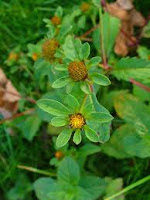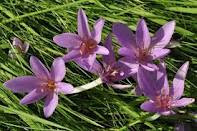Yellow loosestrife is a close relative of creeping Jenny or Moneywort. It was formerly in the primrose or Primulaceae family of plants, but has recently been moved to the Myrsinaceae family making it a relative of cyclamens and Ardisia japonica or Marlberry.
It lives in wetlands and beside lakes and streams, and was introduced to North America relatively recently in the 20th century, but it is already considered invasive along some lakeshores.
It has long been considered an excellent wound healing plant as it has astringent properties which staunch the flow of blood from wounds, or internal haemorrhages, nosebleeds and so on.
Nichols Culpeper, the English herbalist writing his Herbal in the 17th century had this to say about Yellow loosestrife:-
 “Government and virtues. This herb is good for all manner of bleeding at the mouth, nose, or wounds, and all fluxes of the belly, and the bloody-flux, given either to drink or taken by *clysters; it stays also the abundance of women's courses; it is a singular good wound-herb for green wounds, to stay the bleeding, and quickly close together the lips of the wound, if the herb be bruised, and the juice only applied. It is often used in gargles for sore mouths, as also for the secret parts. The smoak hereof being bruised, drives away flies and gnats, which in the night time molest people inhabiting near marshes, and in the fenny countries.” (*enemas)
“Government and virtues. This herb is good for all manner of bleeding at the mouth, nose, or wounds, and all fluxes of the belly, and the bloody-flux, given either to drink or taken by *clysters; it stays also the abundance of women's courses; it is a singular good wound-herb for green wounds, to stay the bleeding, and quickly close together the lips of the wound, if the herb be bruised, and the juice only applied. It is often used in gargles for sore mouths, as also for the secret parts. The smoak hereof being bruised, drives away flies and gnats, which in the night time molest people inhabiting near marshes, and in the fenny countries.” (*enemas) It was believed that as well as getting rid of “flies and gnats” snakes would also flee from it if it was burnt near them.
It was believed that as well as getting rid of “flies and gnats” snakes would also flee from it if it was burnt near them. The name “loosestrife” was given to this herb because it seemed to have a calming effect on animals- whether wild or domesticated. This might have been due to its ability to repel troublesome insects, and it was hung around yokes of oxen and other animals so that they would not get testy because of bites from bugs. Of course, if they weren’t bitten, they would be calm.
The Chinese employ the flavonoids glycosides extracted from this plant in the treatment of high blood pressure, and its flavonoids content means that it has antioxidant properties as it contains quercetin, kaempferol, hyperin, astragalin, isorhamnetin, myriscetin and syringetin among others, It also contains the benzoquinones embelin and rapanone.
 The plant is normally around two or three feet tall but it can grow to five feet, with a yellow dye being produced from the flowers which has served to lighten blonde hair. A brown dye is obtained from its rhizomes.
The plant is normally around two or three feet tall but it can grow to five feet, with a yellow dye being produced from the flowers which has served to lighten blonde hair. A brown dye is obtained from its rhizomes. Pliny says that the plant’s healing properties were first known to King Lysimachus and he gave his knowledge to his subjects. Dioscorides, writing in the first century AD says that the yellow loosestrife’s freshly expressed juice could be used for gastrointestinal problems to great effect and it has been used for thousands of years to stop diarrhoea and dysentery.
This plant was known to John Gerard, the 16th century English herbalist as the Yellow Pimpernel, and it has also been called the Yellow Willow Herb, Herb Willow, Willow-wort and the Wood Pimpernel.















































